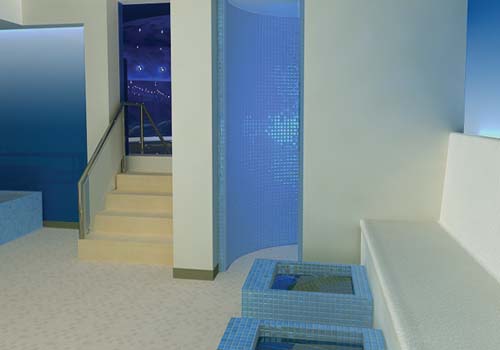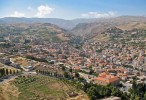With experts agreeing that wet areas are essential spa facilities, the next stage is to establish how they should best be implemented and utilised to maximise revenues.
If a spa doesn't have a wet area, is it really a spa? That's the question posed by Peter Rietveld, managing director of Your Spa by Barr and Wray, which reflects the opinion commonly held by spa designers and suppliers that wet areas and heat areas are both expected and necessary in spas nowadays.
Of course, sauna, steam and spa pool suppliers would believe this, but they are not alone. The trend in the region's newest spas, such as those at Atlantis, The Palm in Dubai, Lime Spa at Per Aquum's new resort the Desert Palm in Dubai and the 10,000m² Anantara spa at Kempinski Hotel Ishtar Dead Sea is for a significant focus on wet areas and thermal experiences.
Schletterer Wellness & Spa Design senior consultant Sarah Lumley explains why.
"Thanks to modern technology, new and improved methods are now used to create watertight, durable wet areas and pools, which aim to create a centre point of beauty, comfort, relaxation and refreshment.

Advertisement
"New shapes and sizes as well as a smart mix of different materials and elements (cement, sand, fibreglass, stone, etc) are characteristic for a new design approach. In addition, fascinating and clever lighting solutions, closeness to nature, contrasts to the conventional and an all-senses approach need to be considered as new challenges in designing wet areas," suggests Lumley.
"Pools are a basis demand: people expect a pool in a wellness and spa area," she adds. "But the pool areas need to be created in a completely new way.
Multifunctional and multi-sensored approaches, unique features to experience, as well as the holistic implementation into the whole wellness and spa concept are crucial for the active use of wet areas. It's like an extension of the expression and feeling of the spa," she says.
Rietveld says that wet areas can be utilised prior to treatment, in between multiple treatments or after a treatment, however, spa wet areas are not just an add-on to the treatment experience.
Sales director at Dalesauna, Gerard McCarthy, explains that spas can increase revenue through a wet facility, despite initial high capital outlay.
"The heat experience is as much a benefit as a treatment delivered by a professional and so should be sold and promoted in the same way," he says.
"A chargeable facility would need a minimum of three heat experiences, plus showers and relaxation space, so it should be in the region of 65m²," estimates McCarthy.
Spa Developments managing director Brian Hunter agrees, adding that not only are there revenue opportunities to sell wet areas as a "hands-off" zone, which would require very little staffing, but the length of time a customer spends in the spa is one to two hours longer.









 Search our database of more than 2,700 industry companies
Search our database of more than 2,700 industry companies









